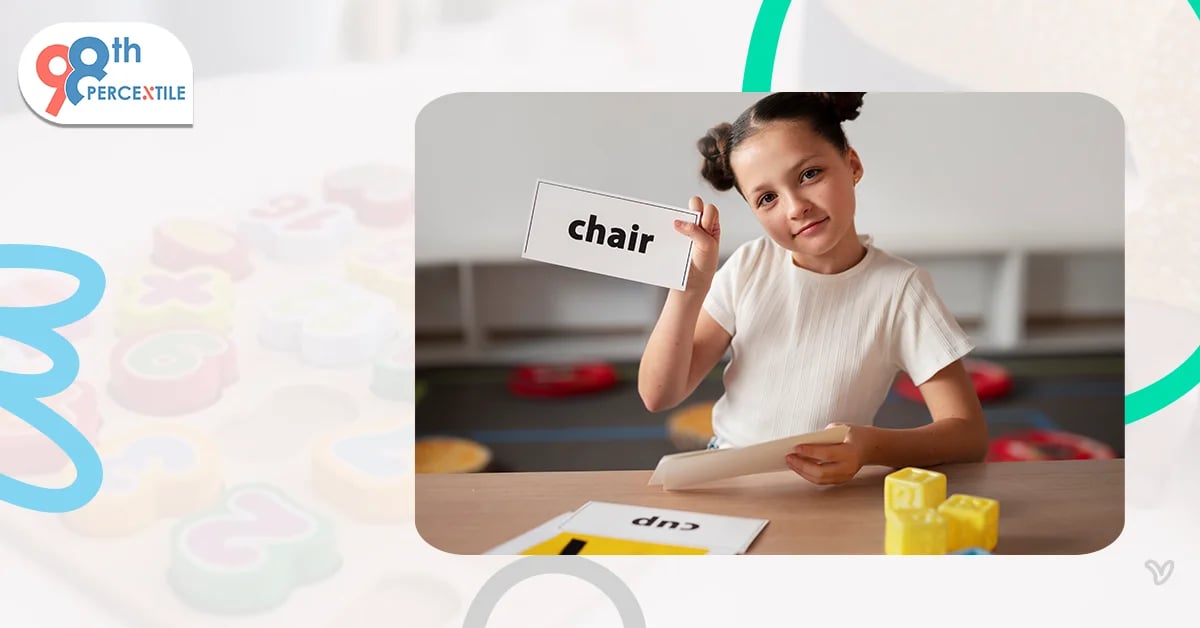Figurative Meaning
Figurative language infuses words with imaginative and metaphorical expressions, allowing writers and speakers to convey complex ideas, emotions, and experiences. Figurative meanings transcend literal interpretations, inviting readers and listeners to engage with language on a deeper level. Let's explore some common forms of figurative language
- Simile: A comparison between two unlike things using "like" or "as."
Example: "Her laughter was as infectious as a melody." - Metaphor: A direct comparison between two, unlike things without using "like" or "as."
Example: "Time is a thief stealing moments from our grasp." - Personification: Attributing human characteristics to non-human entities.
Example: "The trees whispered secrets to the wind." - Hyperbole: Exaggerated statements or claims not meant to be taken literally.
Example: "I've told you a million times to clean your room!"
Enhance Your Child's Verbal Abilities: Start Trial Now!
Connotative Meaning
Connotations are the emotional, cultural, and social associations attached to words, shaping how they are perceived and interpreted. Connotative meanings enrich language by imbuing words with subtle nuances, attitudes, and values. Let's explore some examples of words with connotative meanings:
- Home: Beyond its literal definition of a place of residence, "home" carries connotations of warmth, security, and belonging.
- Eccentric: While denoting unconventional behavior, "eccentric" may carry connotations of creativity, individuality, or social alienation.
- Cheap: In addition to its literal meaning of low cost, "cheap" may carry connotations of poor quality, stinginess, or lack of value.
- Freedom: Beyond its literal definition of the absence of constraints, "freedom" carries connotations of autonomy, empowerment, and liberation.
Technical Meaning
Technical language encompasses specialized terms and terminology used within specific fields, disciplines, or professions. Technical meanings are precise and unambiguous, serving to convey specific concepts, procedures, or principles. Let's examine some examples of technical language:
- Hypotenuse (Mathematics): In geometry, the side opposite the right angle in a right-angled triangle.
- Biosphere (Biology): The regions of the Earth's surface and atmosphere inhabited by living organisms.
- Algorithm (Computer Science): A set of step-by-step instructions for solving a problem or performing a task in computing.
- Gross Domestic Product (GDP) (Economics): The total value of goods and services produced within a country's borders over a specific period.
Implications and Applications
Understanding the nuances of figurative, connotative, and technical meanings of words enhances communication and interpretation across various contexts. Writers and speakers can employ figurative language to evoke emotions, convey vivid imagery, and engage readers or listeners on an emotional level. Connotative meanings allow communicators to shape perceptions, attitudes, and associations, influencing how messages are received and interpreted. Technical language facilitates precision, clarity, and accuracy in specialized fields, enabling effective communication within specific domains.
The multifaceted nature of language encompasses figurative, connotative, and technical meanings, each contributing to the richness, complexity, and effectiveness of communication. By exploring and understanding these dimensions of meaning, communicators can wield language with greater nuance, precision, and impact, fostering deeper understanding, connection, and engagement with their audience.
FAQs (Frequently asked Questions)
Q1: What is figurative meaning, and how does it differ from literal meaning?
Ans: Figurative meaning involves the use of language in a non-literal or imaginative way, often employing metaphors, similes, and other forms of figurative language to convey abstract concepts or emotions. In contrast, literal meaning refers to the explicit or dictionary definition of a word or phrase.
Q2: How do connotations influence the interpretation of words?
Ans: Connotations are the emotional, cultural, and social associations attached to words, shaping how they are perceived and interpreted. These associations can evoke specific attitudes, emotions, or values, influencing the overall tone and impact of communication.
Q3: Can words have multiple connotations?
Ans: Yes, words can have multiple connotations depending on factors such as context, cultural background, and individual experiences. A word may carry positive, negative, or neutral connotations, and these associations can vary among different audiences or situations.
Q4: What is technical language, and why is it important?
Ans: Technical language consists of specialized terms and terminology used within specific fields, disciplines, or professions to convey precise meanings and concepts. It is essential for effective communication within specialized domains, ensuring clarity, accuracy, and consistency in conveying complex information.
Q5: How can I identify figurative language in a text?
Ans: Figurative language often involves the use of metaphors, similes, personification, hyperbole, and other rhetorical devices. Look for words or phrases that suggest comparisons, exaggerations, or attributions of human qualities to non-human entities, as these are indicative of figurative language.
Book 2-Week English Trial Classes Now!

 Students/Staff
Students/Staff Parents
Parents ElevatEd
ElevatEd















